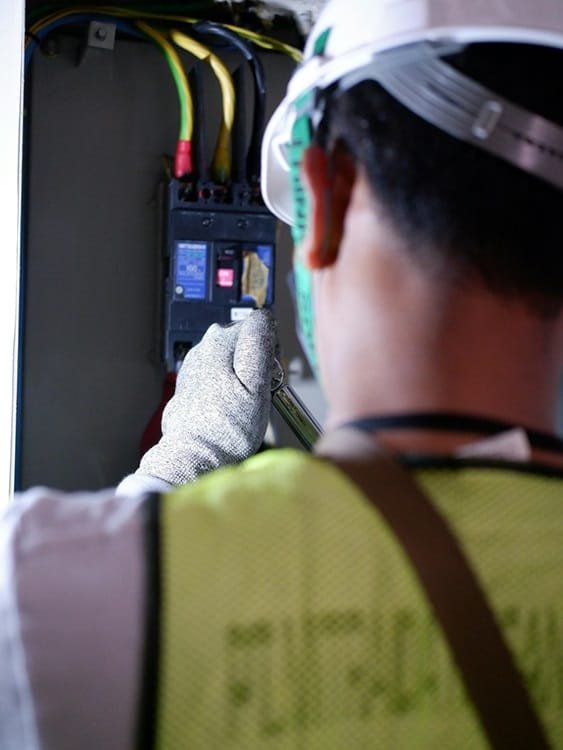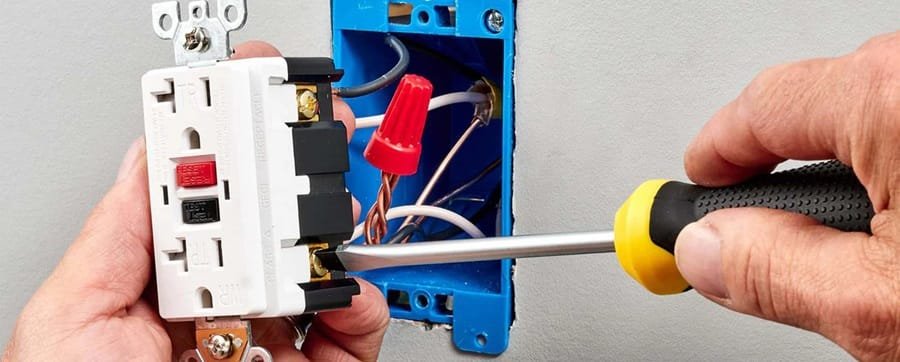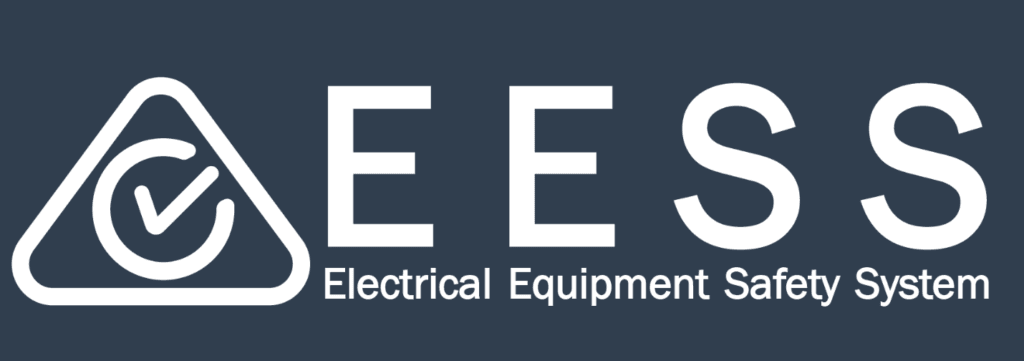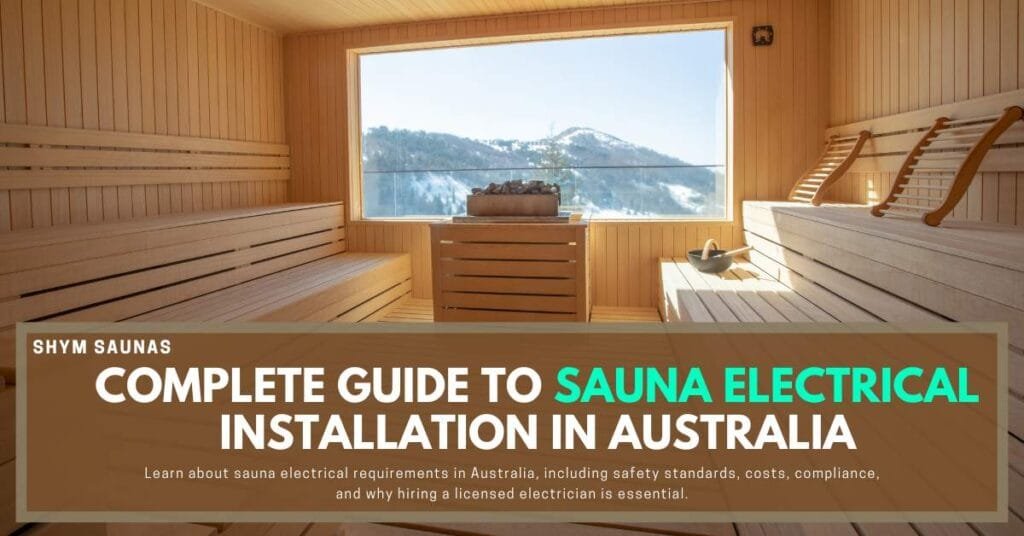When adding a sauna to your Australian home, setting up a proper electrical setup is needed for safety, and to make sure electrical components are functional. Remember, it is mandatory to hire a licensed electrician for all electrical connections to ensure Australian regulations and prevent hazards.
To help understand how electrical setups are done in saunas, this guide will walk you through the key electrical requirements for installing a traditional sauna, helping you make informed decisions for a safe and enjoyable experience.
Key Takeaways
- Traditional saunas require a high-power supply, usually 240V, and must be hardwired into the electrical system.
- Larger saunas often need three-phase power for efficient operation and must be installed by a professional electrician.
- In Australia, all electrical sauna installations must be performed by a licensed electrician to ensure safety and compliance with national standards.
- Safety measures like GFCI switches, proper wiring insulation, and regular maintenance checks by an electrician are essential to prevent electric shocks and other hazards.
- For a safe and functional sauna installation, always consult a certified electrician and adhere to Australian electrical safety standards.
Do You Need An Electrician to Install Sauna Electrical Components?

Traditional saunas require significant power, typically 240V, and must be hardwired into your electrical system. This involves setting up a dedicated circuit to handle the high power demands, ensuring the sauna operates without overloading your home’s electrical system.
Installing a sauna requires attention to the power needs, compliance with electrical standards, and the involvement of a licensed electrician. This guide focuses on traditional saunas and highlights the electrical requirements necessary to ensure a safe and reliable setup.
Electrical Requirements for Traditional Saunas
Traditional saunas typically require a high-power supply, usually 240V. These saunas rely on electric heaters, which can range from 4.5kW to 9.0kW depending on the model and size.
The electrical systems in most homes are not equipped to handle this level of power directly, so the sauna must be hardwired into the electrical system. This process involves setting up a dedicated circuit, which ensures that the sauna has a direct power line without sharing electricity with other devices in the home.
For heaters rated 4.5kW to 6.0kW, a 30-amp breaker is required, along with 10/2 gauge wire. The 10/2 wire is designed to handle the current load safely. For heaters rated 8.0kW, the power demand is higher, so a 40-amp breaker and 8/2 gauge wire are required. These configurations ensure the sauna operates without overloading the home’s electrical system, which could otherwise result in electrical fires or system malfunctions.
Breaker and Wire Requirements for Sauna Heaters

Photo Credit: Pexels
In Australia, all electrical installations, including sauna wiring, must comply with the AS/NZS 3000:2018 (Wiring Rules), which is the standard for electrical installations. This standard outlines the specifications for selecting the appropriate circuit breakers, wiring, and protection devices based on the appliance’s power consumption.
- Circuit Breakers: These are necessary to protect the sauna circuit from overloading. If the sauna draws more power than the circuit can handle, the breaker will trip, cutting off power and preventing damage or fire. The size of the breaker depends on the sauna heater’s power rating. For example, a 30-amp breaker is sufficient for heaters up to 6.0kW, while larger heaters, such as 8.0kW, require a 40-amp breaker.
- Wiring: The 10/2 gauge wire is commonly used for appliances that require up to 30 amps of current, while the 8/2 gauge wire is used for systems requiring up to 40 amps. The “/2” refers to two insulated conductors and one bare ground wire, typically used in high-power systems like electric heaters.
Electrical Safety and Compliance
All sauna installations in Australia must be performed by a licensed electrician in compliance with the Australian Building Code. Not complying with these standards can lead to serious hazards, such as electrical shock, fire, and malfunctioning equipment, and may also void the warranty on your sauna or result in legal penalties.
It’s important to ensure proper wiring insulation and the use of appropriate circuit breakers. Regular maintenance checks by an electrician are recommended to ensure the electrical components of the sauna remain in safe working condition over time. Overloading circuits or using improper wiring can lead to significant risks, including overheating and electrical fires.
Moreover, the AS/NZS 3000:2018 also requires the installation of Residual Current Devices (RCDs) or Ground Fault Circuit Interrupters (GFCIs) for added protection, especially in areas with high moisture, such as saunas. These devices detect any electrical leakage and automatically cut off power to prevent electrocution.
RCD Protection/ GFCI for Saunas

Saunas should have Residual Current Device (RCD) protection to enhance safety. An RCD, also known as a Ground Fault Circuit Interrupter (GFCI), helps prevent electrical shocks by immediately cutting off power if it detects that electricity is flowing through an unintended path, such as water or a person. Since saunas involve heat and humidity, having RCD protection is crucial for preventing electrical hazards.
Installing an RCD is generally required in Australia and other countries to comply with electrical safety regulations, and it is especially important in environments like saunas, where moisture levels are high.
EESS Registration and Responsible Supply of Electric Sauna Heaters

We are proud to be registered with the Electrical Equipment Safety System (EESS) as a Responsible Supplier of electric heaters for saunas. The EESS is a regulatory framework in Australia and New Zealand that ensures electrical equipment meets strict safety standards before it is sold to consumers. By being registered with EESS, we comply with all safety, performance, and compliance standards, providing you with the assurance that our products meet the highest levels of safety and reliability.
All the electric sauna heaters we offer are designed for private, residential use only. This ensures they are suitable for home installation, whether you have a traditional or infrared sauna. We strictly adhere to the regulations set out by the EESS, ensuring that every heater sold is safe and reliable, and meets the required Australian safety codes.
This also means that our products are legally certified and fully compliant with Australian safety laws, protecting consumers from any safety hazards associated with poorly regulated electrical equipment.
How Much Does It Cost to Run a Sauna in Australia?
The cost of running a sauna in Australia depends on the size of the sauna, the type of heater, and how frequently it is used. For traditional saunas, which typically run on 240V and consume between 4.5kW to 8.0kW, the cost can vary depending on how often and how long you use your sauna. Here’s an example:
Let’s assume a sauna with 6 kilowatts (kW) operating on 240 volts (V). For the the usage:
- Frequency: 2 times per week
- Duration per Session: 15 minutes (0.25 hours)
- Heating Time per Session: 1 hour
- Monthly Sessions: 2 sessions/week × 4 weeks=8 sessions/month
Calculate Energy Consumption: For each session, there are two components to consider: heating period and actual sauna use.
a. Energy Use for Heating:
Power (kW)×Heating Time (hours)= Energy use for heating
6 kW ×1 hour = 6 kWh/session
b. Energy Use for Usage:
Power (kW) × Usage Time (hours)= Energy Use for Usage
6 kW × 0.25 hours = 1.5 kWh/session
c. Total Energy Use per Session:
6 kWh (heating) + 1.5 kWh (usage) =7.5 kWh/session
d. Monthly Energy Use:
7.5 kWh/session × 8 sessions = 60 kWh/month
Calculate Monthly Cost: Assume average electricity rate in Australia, approximately $0.30 per kWh (rates may vary based on provider and location)
Monthly Cost= Monthly Energy Use × Electricity Rate
60 kWh × $0.30/kWh= $18.00 per month
Monthly Cost to Run a 6kW Traditional Sauna: Approximately $18.00
The larger the sauna and the more powerful the heater, the higher the running costs. Factors such as the insulation of the sauna, frequency of use, and local electricity rates also play a significant role in determining the cost.
Wrapping Up
Understanding the electrical needs of a sauna, especially traditional ones, is essential for both safety and functionality. For those considering installing a sauna in their home, consulting with a certified electrician is crucial. Ensure that you adhere to Australian electrical safety standards and get the right power setup for your sauna model.
Ready to power up your sauna? As an EESS registered supplier, we at Shym Saunas ensure all our sauna heaters meet the highest safety and performance standards. Whether you’re installing a traditional, you can trust our products for private use in your home. Browse our collection today and take the first step towards your perfect sauna experience!
FAQ
1. Does a Sauna Need a Dedicated Circuit?
Yes, a sauna needs a dedicated circuit to prevent overloading your home’s electrical system. Traditional saunas, which draw between 15 to 40 amps, require their own circuit to avoid electrical hazards. While infrared saunas use less power, a dedicated circuit is still recommended to protect the system and ensure efficient operation.
2. Can I Plug a Sauna into a Regular Outlet?
Traditional saunas typically cannot be plugged into a regular outlet due to their high power requirements (240V and up to 40 amps). Smaller infrared saunas may be plugged into a standard 10-amp household outlet, but using a dedicated outlet is recommended to prevent electrical overloads.
3. What Power Supply Do I Need for a Sauna?
Traditional saunas require a 240V power supply and can need up to 40 amps depending on the heater size. Infrared saunas generally need less power and can often run on a standard 10-amp household outlet. Always check with an electrician to ensure your home’s electrical system can support your sauna.
4.Does a Sauna Need an Isolator?
Yes, saunas should have an isolator switch to allow the power to be turned off safely during emergencies or maintenance. It should be installed outside the sauna room and is particularly important for high-power traditional saunas to ensure safety and protect the system.
5. How Do You Power an Outdoor Sauna?
Powering an outdoor sauna requires weatherproof wiring and protective enclosures for external components. GFCI protection is essential to prevent electrical hazards in wet environments. If the sauna is far from the main power source, a sub-panel may be necessary for efficient power distribution.
6.Can You Power a Sauna with Solar Panels?
Yes, you can power a sauna with solar panels, but larger traditional saunas require more power (up to 8.0kW), so a robust solar system is necessary. Smaller, energy-efficient infrared saunas are better suited for solar power due to their lower electricity consumption. Consult with a solar expert to assess your system’s capacity.
7. Do I need a licensed electrician to install my sauna?
Yes, in Australia, it’s mandatory to hire a licensed electrician for sauna installations. This ensures compliance with local electrical codes and safety standards.
8. How much power does a sauna heater typically consume?
Sauna heaters usually range from 3 kW to 9 kW, depending on the size of the sauna. Choose a heater that matches your sauna’s dimensions for optimal performance.
9. Are there any special considerations for outdoor saunas?
Outdoor saunas need weatherproof electrical components and proper insulation to protect against moisture. Consult with your electrician for specific outdoor installation requirements.
10. How do I calculate the electrical load for my sauna?
To calculate the electrical load, sum the power ratings of all electrical components, including the heater, lighting, and any additional features. Ensure your circuit can handle this total load.
11. What safety features should I look for in a sauna heater?
Look for heaters with built-in safety features like automatic shutoff, overheat protection, and timer controls. These features enhance safety and prevent electrical hazards.
12. How often should I inspect the electrical components of my sauna?
Regular inspections, at least once a year, are advisable to check for wear and tear, loose connections, or any signs of electrical issues. Timely maintenance can prevent potential hazards.




